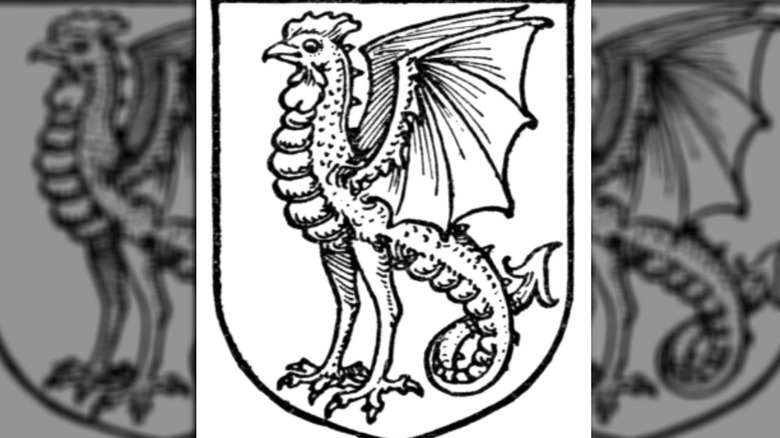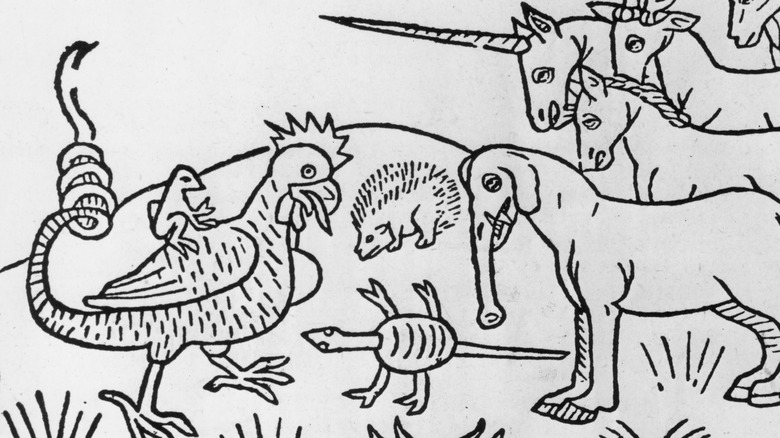The Meaning Of The Cockatrice In The Bible Explained
We're not saying anything shocking or revolutionary here, but the Bible has some really weird stuff in it. That's especially true of the King James version, which, in addition to all the incest and horrific violence you find in any other Bible, is chock-full of creatures like unicorns and satyrs that just ... don't exist.
One of the weirdest beasts you'll find mentioned in the King James Bible, though, is the cockatrice, which shows up in three verses in Isaiah and one in Jeremiah. Isaiah 11:8, for instance, reads: "And the sucking child shall play on the hole of the asp, and the weaned child shall put his hand on the cockatrice' den." Sounds dangerous — but what exactly is a cockatrice?
According to Britannica, a cockatrice was a creature born from the egg of a rooster (important side note: roosters do not lay eggs) and hatched by a serpent. Sometimes compared to a basilisk, it had a dragon-like body and a rooster's head, and was said to be able to turn people, animals, and plants to stone just by looking at them or even breathing on them. If you were in cockatrice-infested parts, your only hope of survival was to bring a weasel or a rooster with you — allegedly, the weasel was immune to the cockatrice's powers, and the crow of a rooster would kill one instantly.
Needless to say, the things don't exist. So how did they wind up in the Bible?
The Bible's cockatrice isn't actually a cockatrice
The presence of the cockatrice in the Bible has nothing to do with the original Hebrew text and everything to do with early English translators. As Catholic Answers points out, the cockatrice was invented in 12th-century Europe — there's no evidence the ancient Hebrews believed in them, and no reason to think they would put them in the Bible.
The Hebrew word in question is tsepha' (via Bible Hub), which modern translators now know is best rendered as "snake" or "adder." Fourteenth-century priest John Wycliffe didn't know that, though: When he went to write the first English translation of the Bible (via Britannica), he did a pretty decent job overall, but he didn't know the exact meaning of some words, like tsepha'. It was clear, though, that it was some sort of super-scary snakelike thing, so he inserted the scariest snakelike thing he could think of: the cockatrice. Later English translations, including the King James version, preserved the error.
More recent scholarship has brought the true meaning of tsepha' to light, and also brought the nonexistence of cockatrices to light, so modern translations reflect that.

